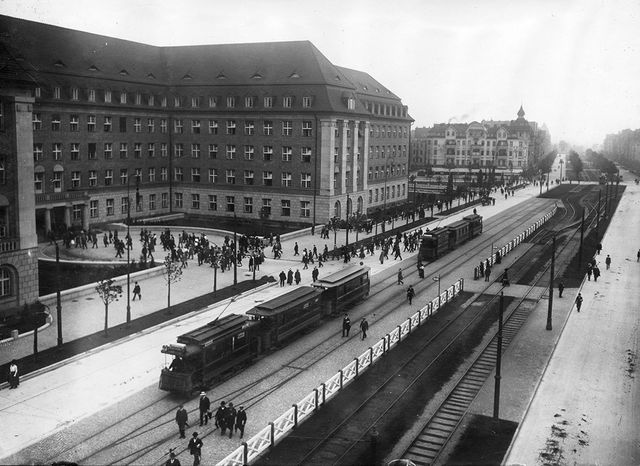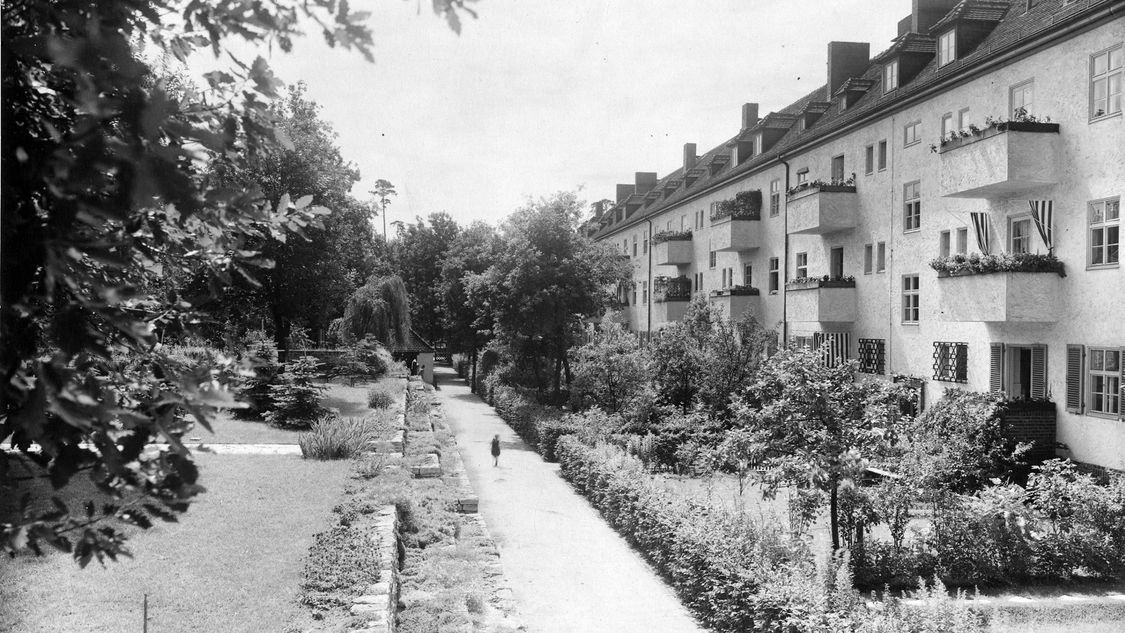Now, 125 years after the first investment in Siemensstadt, around one million square meters of floor space for industrial operations, commercial activities, research, education, residential units, temporary lodgings and social infrastructure are to be built here by 2035. As a hybrid city, Siemensstadt Square will not only bring together space for living and working, but also combine the digital and real worlds: a holistic digital twin – a virtual representation of Siemensstadt Square – is being used to plan and build the district and will later be used to operate it.
The digital twin not only serves as a data model for the individual buildings, but also for the infrastructure, including roads and open spaces as well as the supply of power and other utilities. In this way, a comprehensive digital representation is being created for the first time. To make such a model possible, all project data and live data are fed into a single platform. The parties involved in the project can access this information and collaborate on the platform. One of the goals is to optimize the buildings and infrastructures before they are ever built. In addition, digital planning provides a basis for also making the urban district “smart” later on during operation. This future-oriented location is being built twice – first in the digital world and then in the real one.
To get the industrial location ready for the future, two manufacturing hubs with around 180,000 square meters of useable space will be built. The hub to be used by Siemens will be built on the grounds of today’s “Dynamowerk” factory. Among other things, the Schaltwerk factory’s manufacturing operations for medium and low- voltage switchgear will be integrated into this site. A former dispatch hall will be modified to create space for research and development with laboratory zones and a clean-room area. In addition to Siemens’ Technology unit, the Werner-von-Siemens Centre for Industry and Science e.V. (WvSC) will also be moving into this building.
Today, there are already 28 member organizations working in Siemensstadt as part of the WvSC’s ecosystem to perform research on innovative, practical solutions for transforming manufacturing, energy- and transportation systems.
As an on-site visit to the Siemensstadt rail station confirmed, the relaunch of the Siemensbahn rail line is also progressing according to schedule. The plans are now being drawn up: Deutsche Bahn (DB) is conducting an extensive inspection of the building structures. Among other things, samples of the steel and concrete are being taken, and the future rust protection for the steel viaduct is being tested. Early integration of the local community is also beginning: The latest information is available online on DB’s construction-information portal. In addition, the project will be introduced to the public this fall at a dialogue event. Beginning in 2029, the rail stations for Gartenstadt, Siemensstadt and Wernerwerk – which are currently still in a Sleeping Beauty slumber – will then be put “back on the Ring”: the Siemensbahn provides this urban district with the vital connection to the Ringbahn (“ring railway line”) that encircles downtown Berlin.
The 4.5-kilometer Siemensbahn line was put into operation in 1929, but no trains have been operating on it since 1980. By 2029, about €500 million will be spent on reactivating it to provide transportation services for the new urban district and to ensure that these offerings are climate friendly. As part of its i2030 project, the State of Berlin is financing the planning. DB is renovating or rebuilding around 30 bridges, erecting retaining walls, laying new tracks, and installing new switches and signaling technology. The historical train stations will be modernized and upgraded for accessibility.
“Siemensstadt Square will be instrumental in making Berlin one of Europe’s top places to do business. History has been written at the Siemens location in Spandau, and now the future is being shaped in Berlin with Siemensstadt Square,” says Franziska Giffey, governing mayor of Berlin. “Here, a new section of the city is being created – a place that will be home to the industrial manufacturing of the future as well as to science and research. Together with Siemens, we will make this part of town an attractive place for the people of Berlin and for those who visit our city. Jobs will be created along with space for commercial activities. In addition, about 2,700 residential units are to be built here. The Siemensbahn rail line will add an appealing transportation link. All this will bring progress for the entire district. The key here is that the state, the business community and the academic institutions all collaborate closely. That has been our winning formula until now, and it will also continue to our recipe for success with our new joint project for 21st-century Berlin.”
“At Siemens, we’re absolutely convinced of digitalization’s full potential so that industry and infrastructure can achieve more with less. And starting today, we’ll be bringing that power of digitalization to Siemensstadt Square as well,” says Cedrik Neike, member of the Management Board of Siemens AG and CEO Digital Industries. "With a digital twin of the future neighborhood, we’ll now be able to simulate and test it in the digital world first so that we can make Siemensstadt Square more sustainable, more inclusive, and more livable in the real world."
"With Siemensstadt Square, we are strengthening the site as an industrial location, securing the future of local manufacturing operations and shaping a modern future- oriented location that redefines how we will live, work, manufacture and perform research in the future,” says Stefan Kögl, General Manager Siemensstadt Square.
Alexander Kaczmarek, Representative of Deutsche Bahn AG for Berlin, Brandenburg, Mecklenburg-Vorpommern, said: “The new Siemensbahn is becoming visible within Siemensstadt Square! We are now already beginning our communication activities on the construction work for reactivating this historic line. As the appearance of Siemensstadt changes over the next few years, we also want to keep local residents constantly informed about the progress being made on site in terms of planning and construction. Beginning in 2029, the line will then be ‘back on the Ring!’”









